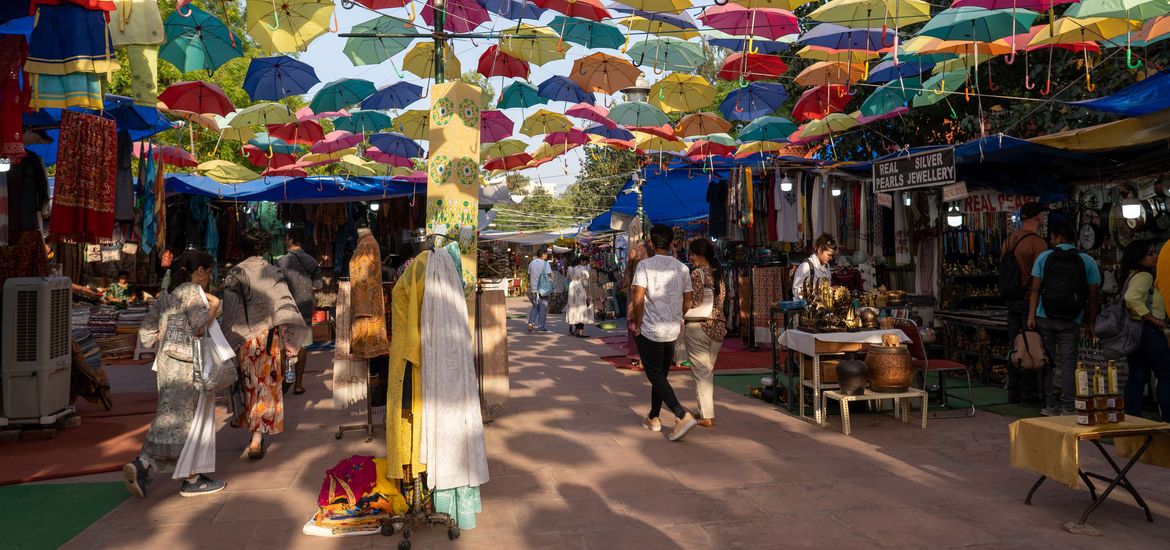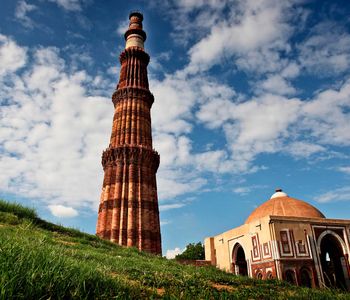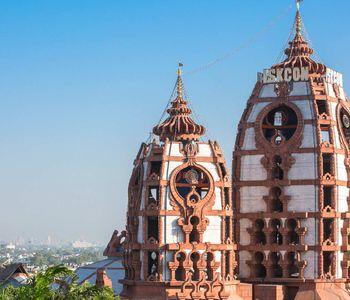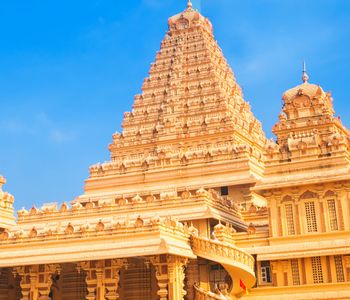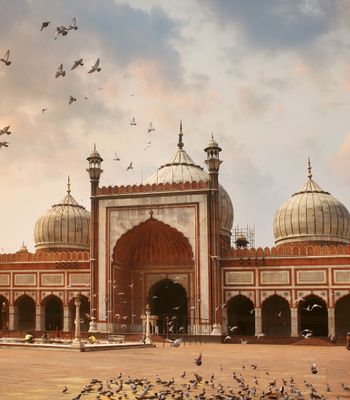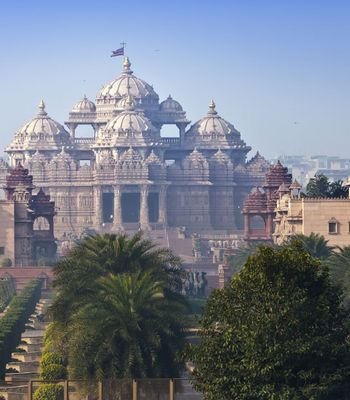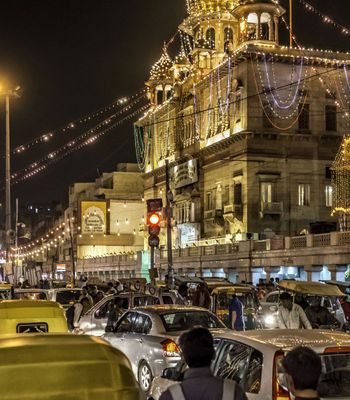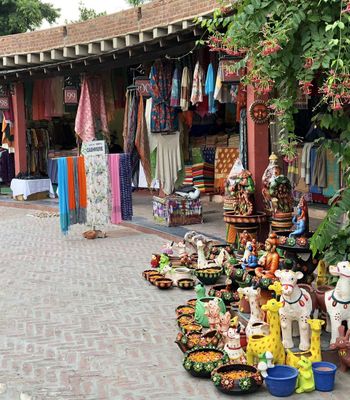Lajpat Nagar is where history, culture, and commerce collide to create one of Delhi’s most vibrant neighbourhoods. Named after the honourable freedom fighter Lala Lajpat Rai, this area has evolved from a refuge for Partition-era migrants into a bustling hub of activity.
Today, it’s famous for its lively markets, diverse street food, and deep-rooted heritage. Whether you’re looking for the latest fashion trends, savouring authentic Afghan cuisine, or soaking in a slice of Delhi’s past, Lajpat Nagar has something for everyone. Let’s dive into what makes this neighbourhood a true gem in the heart of the capital.
From Refugee Haven to Urban Hub: The Evolution of Lajpat Nagar
Lajpat Nagar, located in Southeast Delhi, was established in the 1950s and has a history deeply tied to India’s Partition. Before becoming the bustling hub it is now, it was originally a refuge for Hindu and Sikh families who had to flee newly formed Pakistan after the Partition in 1947.
Over the years, these settlers, especially the ones from regions such as Saraiki and Sindh, transformed the area into a thriving urban hub. They reshaped its identity, building homes, businesses, and a strong sense of community. Neighbourhoods such as Amar Colony and Dayanand Colony stand as testaments of this rich legacy.
Today, Lajpat Nagar has grown beyond its Sikh roots, welcoming people from different communities. The influx of Afghan immigrants has added another layer to its cultural fabric, introducing flavours, traditions, and an international charm to the area.
Architectural Tapestry: A Walk Through Lajpat Nagar’s Lane
Walking down the lanes of Lajpat Nagar can show you the stark difference between the architecture of the past and the present. In its early days, the neighbourhood was lined with simple, single-storey homes with asbestos roofs, resembling army barracks. Over the years, these structures gave way to multi-storey buildings, now housing residences, boutiques, restaurants, and offices.
Today, the contrast is striking. The traditional-style homes standing next to the sleek glass-fronted showrooms reflect the evolution over the years and make Lajpat Nagar not just a bustling marketplace but a fascinating place to explore.
Where to Go: Must-Visit Spots in Lajpat Nagar
Lajpat Nagar is a whirlwind of energy, colours, and endless experiences. Here are the top things you simply can't miss:
Central Market
The central market in Lajpat Nagar is a shopaholic’s paradise. From trendy outfits and traditional Indian wear like sarees, salwar suits, and lehengas to matching jewellery, juttis, and handbags, this market has it all. Beyond clothing, you’ll also find an impressive selection of home décor, making it a one-stop shopping destination.
Treat Yourself to Delicious Street Food
If you’re a foodie who loves to experiment and try different foods, Lajpat Nagar’s street food scene won’t disappoint. Treat yourself to North Indian favourites like Ram Laddu, Chole Bhature, and crispy Golgappas, or try the ever-popular momos. The area is also home to some of the best Afghan cuisine in Delhi, where you can savour juicy kebabs, Afghan-style pulao, and freshly baked naan at eateries run by the local Afghan community.
Discover Culture at Lajpat Bhawan
The community centre is all about art, theatre and literature. It’s renowned for hosting book fairs, exhibitions, cultural events and even theatre performances. It also offers skill-building workshops and charity programs, making it more than just an event space—it’s a place to connect and contribute.
Explore the Afghan Street
Once a refuge for Afghan immigrants, this part of Lajpat Nagar is now affectionately known as Afghan Street. Here, you can immerse yourself in Middle Eastern flavours and traditions. From fragrant Afghan bread and exotic dry fruits to traditional sweets and imported perfumes, this hidden gem offers a unique glimpse into Afghan culture right in the heart of Delhi.
When to Experience Lajpat Nagar’s Vibrancy
The best time to visit Lajpat Nagar is between October and March. During this time, Delhi’s weather is pleasant and perfect for exploring the bustling markets. Since it's the winter season during these months, you'll be able to stroll through the streets without the discomfort of extreme heat.
While the market is open year-round, summers can be harsh, and monsoons bring unpredictable showers, which may affect your experience. If you’re visiting during the warmer months, it’s best to explore in the evening when temperatures are more bearable.
Lastly, for a less crowded experience, visit the neighbourhood during weekdays as it is fully packed with shoppers on the weekends.
Navigating Your Way to Lajpat Nagar
Lajpat Nagar is well-connected to all parts of Delhi by metro, road, and rail, making it easily accessible for both locals and visitors from across India and the world.
By Air
If you're flying in, Indira Gandhi International Airport is about 14 kms from Lajpat Nagar. From there, you can either take a taxi, cab or the airport metro to reach the neighbourhood within 30-40 minutes. If using the metro, buy a ticket for Lajpat Nagar Metro Station, which is served by both the Pink and Violet Lines. Exit from Gate No. 5 for direct access to Central Market.
By Train
For train travellers, the nearest railway station is Hazrat Nizamuddin Railway Station, just 4 km away. Another major option is New Delhi Railway Station, 11 km from Lajpat Nagar, offering connections to cities across India. From both stations, you can hop into a taxi, auto-rickshaw, cab, or local bus to reach your destination.
By Road
If you’re in Delhi, getting to Lajpat Nagar is simple. Auto-rickshaws, app-based cabs, and taxis are readily available across the city. DTC buses also run frequently, making it easy to reach the neighbourhood no matter where you're staying.
Festivals and Events: Celebrating Diversity
Lajpat Nagar’s lively atmosphere becomes even more electrifying during festival season. With multiple communities calling this neighbourhood home, celebrations here are grand, colourful, and unique.
Diwali, Holi, Karwa Chauth, Teej, and Nauroz (Persian New Year) are some of the most significant festivals. During each of these events, the area transforms with dazzling lights, festive decorations, and an infectious energy. Every festival brings its own charm: be it the twinkling diyas of Diwali, the playful colours of Holi, or the intricate mehendi designs of Karwa Chauth. Lajpat Nagar offers a true taste of Delhi’s multicultural spirit in its most joyous form during the festive seasons.
Lajpat Nagar holds inside it the resilience of people who rebuilt their lives after Partition. From its refugee roots to its evolution into a bustling shopping district, this neighbourhood carries stories of perseverance and transformation. Visiting this place is like witnessing a tale of the people who turned struggle into success. So, next time you visit the capital, immerse yourself in Lajpat Nagar’s history and soak in its unique energy!
